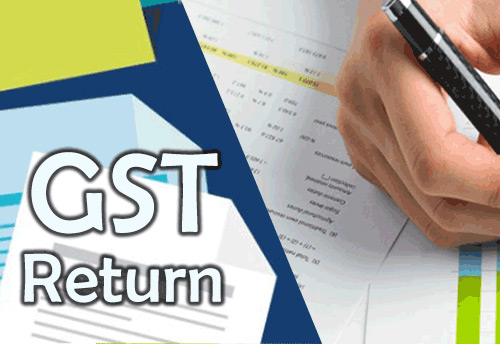GST Return Filing
- Providing end-to-end professional services to preserve your financial accounts per year with GST filing in Delhi & India.

What is GST Return?
A GST return is a document that contains information about your sales, purchases, sales tax (output tax), and sales tax paid (input tax). After filing GST returns, you must pay the resultant tax liability (money that you owe the government).
Get the updated information of new GST tax slab 2022
It is a document that contains records of all income, sales (output GST), spending, or purchase data that every registered taxpayer (with a valid GSTIN) must give to the tax authorities when completing their GST returns. This document also assists authorities in determining the taxpayer’s net tax due. You may file your GST or GST Returns online.
Type Of GST Return
- GSTR-1 Details of outward supplies (consisting products and services) and filed on a monthly basis (and quarterly for taxpayer registered under the QRMP scheme).
- GSTR-2 Details of inward supplies of taxable products and services (effected after claiming input tax credit)
- GSTR-3 Collective details of outward, inward supplies and tax payment (filed monthly).
- GSTR-3B Summary of outward supplies effected by Input Tax Credit and tax payment (filed monthly or quarterly).
- GSTR-4 It is filed byall the taxpayers who are registered under the composition levy
- GSTR-5 It is filed by non-resident foreign taxable people
- GSTR-6 Returns for an input service distributor
- GSTR-7 Returns for authorities deducting TDS
- GSTR-8 Details of supplies (via e-commerce operator) and the amount of tax that is collected
- GSTR-9 Annual return for a normal taxpayer
- GSTR-9A Annual return of a taxpayer registered (composition scheme) and can be filed anytime during the financial year. But it is suspended now.
- GSTR-10 Final return
- GSTR-11 Details of inward supplies provided by a person having UIN who is claiming a refund
What does it mean by the composition scheme under GST?
This scheme was introduced for small taxpayers to lessen their efforts in GST formalities and file GSTR at a fixed rate of turnover.Any small businessman with a turnover of less than Rs. 1.5Cr.can opt for this scheme.
The taxpayers must file their GST returns using the CMP 08 form (quarterly) and GSTR4 (annually). They need to provide the following information:
- Invoice-wise interstate and Intrastate inward supplies
- Summarized details of the outward supplies
You don’t need to worry about the formalities with our GST return filing in Delhi and India. We’ll help in the entire process from preparation to submission of the GSTR form.
Who is eligible to file GSTR?
All the regular businesses with an annual turnover of Rs. 5Cr+ have to file 2 monthly and an annual return which sums to 26 returns in a year. The GST regime for taxpayers who quarterly file GSTR-1 under the QRMP scheme is different. They have to file 9 returns in a year (GSTR-3B and annual return). For taxpayers under the composition scheme, 5 returns have to be filed yearly, including one annual return
How to file GST Return?
- Share your basic details with us for GST return filing in Delhi and other parts of the country.
- Our team of financial experts will contact you within a few minutes for consultation.
- We take all the details and upload the financial data including sales& purchases. Then we’ll categorize it and select the types of file you have accounts in. It could be ERPs like tally or busy or software like Excel.
The following procedures can be used to finish the GST return online filing process
Step 1: Register to the GST portal at gst.gov.in.
Step 2: A 15-digit number will be assigned to you based on your relevant statute and PAN number.
Step 3: You must upload each invoice you have. A code will be assigned to each invoice.
Step 4: Following that, file the external returns, and inbound returns, and process the results returns. All mistakes are correctable.
Step 5: On or before the 10th of the month, file the GSTR-1 outbound supply reports utilizing the information area of the GST Common Portal.
Step 6: The supplier’s outbound supply will be obtained from the GSTR-2A.
Step 7: The recipient must next check the information of the external supply and provide credit or debit note data.
Step 8: Fill out the GSTR-2 form with information on the inbound supplies of goods and services.
Step 9: The supplier can accept or reject the information given by the inward supply as shown in the GSTR-1A.
